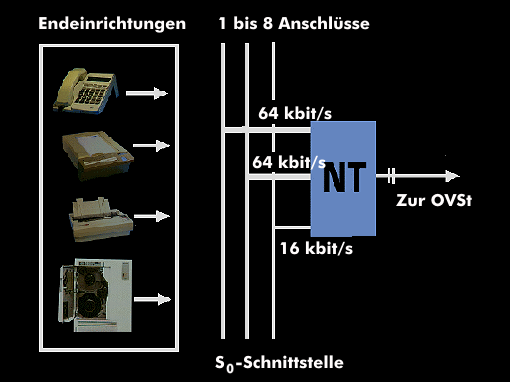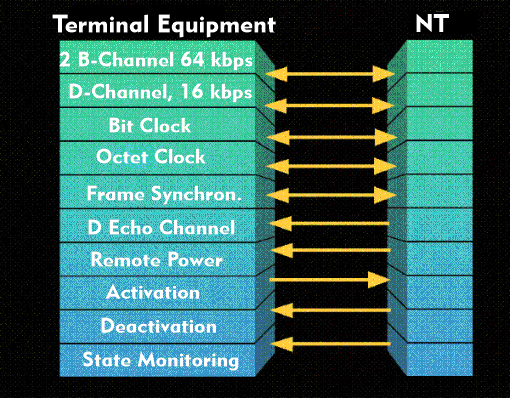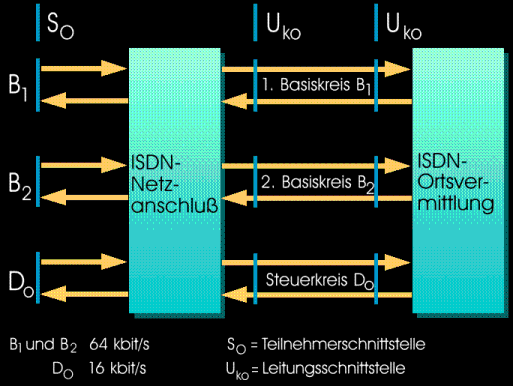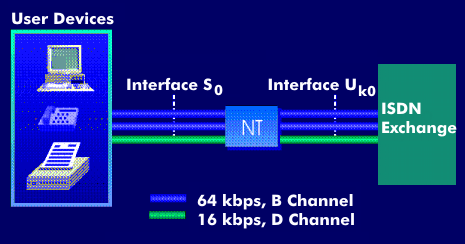S0 interface
ISDN provides an S0 interface for all forms of communication. Two user channels, the basic channels, with 64 kbit/s each can be provided to each terminal via the S0 interface. In addition, a control channel with 16 kbit/s belongs to each basic access. This control channel is referred to as the D channel.
From the user's point of view, the S0 interface ensures a uniform interface for all ISDN-capable communications terminals; from the network operator's point of view, it ensures a clear demarcation between the network operator and the network user.
The individual functions of the S0 interface
The B channels: These are used for transmitting all types of information at a maximum bit rate of 64 kbit/s.
The D channel: This channel is used to exchange control information between the terminals and the ISDN node. In addition, the D channel can be used to a limited extent for the transmission of packetized data. The D channel is particularly suitable for the transmission of Temex data for remote control and monitoring.
The bit clock: With the bit clock, the terminal equipment( TE) and the network terminators( NT), can derive informatins from the entire bit stream.
The octet clock: This 8 kHz clock signal is defined by the frame structure and is used for the correct operation of speech coders.
The frame synchronization: a signal to detect the beginning of the frame, which is used for synchronization between the transmitter and receiver.
The D-channel access control: it controls the coordinated access of the terminals to the D-channel.
The remote power supply: This power supply comes from the exchange and supplies the interface in case of failure of its own supply.
The activation/deactivation: the activation puts the terminal equipment and the network termination in the normal operating state. It thus enables the transmission and reception of data. Deactivation puts the terminal equipment (TE) and the network termination (NT) into a ready state with reduced energy consumption.
The power-on status monitoring: this device allows a terminal device to determine whether it is connected to the interface or not.
The S0 interface is a 4- wire interface, i.e. the installation of a basic connection in the form of a passive bus consists of a cable with two twisted pairs of wires. All three channels (2 B-channels and 1 D-channel) guarantee that the bit streams to be transmitted can be exchanged in duplex mode. Furthermore, each terminal device has the option of using the two B channels for mixed or multiple communication (e.g. long-distance call and data transmission). All terminal devices can simultaneously access the D channel to perform their own controls. This results in a net bit rate of 144 kbit/s (64 + 64 + 16) for transmission via the S0 interface.
To control the interface, the line capacity of 48 kbit/s is also required. This means that a bit stream with a gross bit rate of 192 kbit/s is transmitted via the S0 interface. For this, 4000 frames per second with a length of 48 bits are synchronously exchanged via the interface. The capacity of 48 kbit/s is mainly used to synchronize the frames and to coordinate the access of the terminal devices to the D channel.
As a transmission method, the S0 interface uses modified AMI coding on the user side after network termination (NT).




